
9. Saint-Jean-de-Losne to Verdun-sur-le-Doubs
7 points of interest
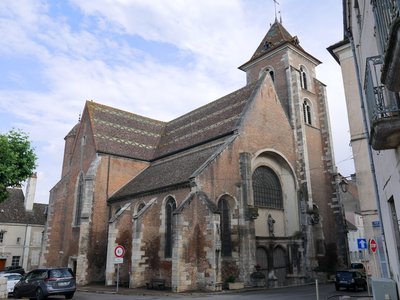
Vue générale de l’église de Saint-Jean-de-Losne - Amis saint Colomban TouristThe Saint-Jean-Baptiste church of Saint-Jean-de-Losne
The Church of St. John the Baptist (16th century) replaced an older building. The town register was already established when the church was built. As a result the building is not oriented.
In 1840, in order to access the new bridge over the Saône, the roadway had to be raised by almost two metres: today one goes down four steps to the gate, whereas before it was necessary to climb nine steps. The whole complex is built in brick with the exception of the limestone portal. The roof is made of glazed tiles, typical of Burgundy. Inside, you will discover the Sampans marble pulpit of a more beautiful effect (quarries in the region of Dole now abandoned). The high altar and the canopy, dating from the 18th century, are the work of an Italian artist, Antoine Marquetty. The organ with a rococo case dates from the same period.
Excerpt from the visitor's guide booklets available in the church.
Monument commémoratif du siège de 1636. - Amis saint Colomban HistoricalThe Saint-Jean-de-Losne bridge: a strategic passage in times of war.
At this place, the Roman road between Salins and Dijon crossed the Saône to transport the salt from Comtois. The town was located opposite on the other bank, at Losne. Notre-Dame-de-Losne, a priory dependent on Cluny had been built. Initially dependent on the Dukes of Burgundy, the town was attached to the royal domain under Louis XI, on the death of Charles the Bold.
On October 28th 1636, the Austrian troops, after entering the kingdom of France from the towns of Gray and Dole in Franche Comté, decided to settle in Saint-Jean-de-Losne for the winter. The town withstood the onslaught in spite of the flooding Saône. The royal troops came to support the besieged and repel the enemy.
In 1814, an Austrian post was set up in front of the town and in a patriotic spirit the inhabitants joined the French soldiers. The war lasted one hundred days and Napoleon awarded the town the Legion of Honour in tribute to this resistance which held back the Austrian advance.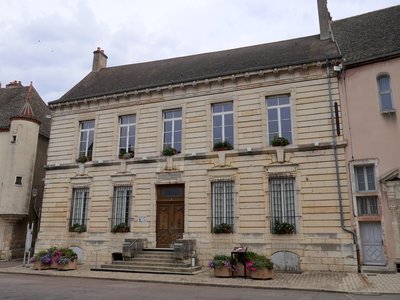
Mairie de Seurre - Amis saint Colomban HistoricalSeurre Town Hall
Ancient place of the Estaple where the mercenaries used to share their booty, on November 17, 1754, the famous Mandrin freed the prisoners from the jails of the town hall. Ruined, following the League and Fronde wars, the Dijon architect Pierre-Joseph Antoine rebuilt it in the neo-classical style from 1771. On the left side of the facade you can see a decoration that served as the entrance to the courtyard of the governor's house opposite the Bossuet house. Between 1 April and 29 May 1789, the young lieutenant Bonaparte, under the orders of Captain Dumanoir of the artillery regiment of the Fère d'Auxonne came to Seurre to quell a revolt of the starving population. On the steps of the town hall, accompanied by Mayor Pierre Millot, he declared to the crowd: "Let the honest people withdraw, I have orders to fire only on the scoundrel". The revolutionaries of 1789 burned municipal papers, including the charter of 1278. In the room of the present police station is one of the two cannons purchased by the town in 1784 for the arrival of Louis-Joseph de Bourbon, Prince de Condé and last governor of Burgundy.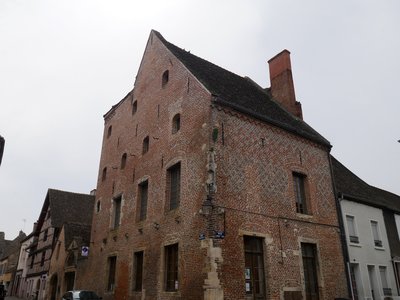
La maison des ancêtres de Bénigne Bossuet (XVIe siècle) - Amis saint Colomban HistoricalHouse of the ancestors of Bossuet in Seurre
The house of the ancestors of Bossuet, the famous French bishop and writer, was built at the beginning of the 14th century. Today it houses the tourist office "Rives de Saône" and the museum of the Saône and the people of the Saône. Three floors are dedicated to the archaeology and geology of the Saône Valley, inland navigation and the origin of the prosthesis industry. You will be able to have fun identifying the different animals that hide from the architecture of the house.
You will be able to admire the half-timbered house next to the Bossuet house. In the 16th century, as stone was not available on site, the builders of Seurre used brick and half-timbering.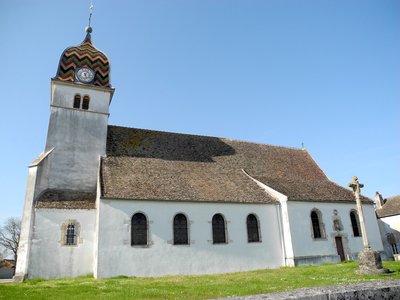
Église Grégoire le Grand à Charnay-les-Chalon - Saône-Doubs-Bresse Tourisme TouristGrégoire-le-Grand Church in Charnay-lès-Chalon
The parish church of Saint-Grégoire-le-Grand dates from the 15th and 16th centuries. The church is located in the centre of the village, in the enclosure of the old cemetery. It is mainly built in brick, except for a few upper courses in the attic walls and a reworked part of the bell tower on the nave side. The choir, the oldest part of the building, is said to have been built in 1468. The axial window and the vault make it possible to date the choir to the middle of the 15th century, although it was restored in the 17th century after the village was burnt down by Gallas' troops in 1636.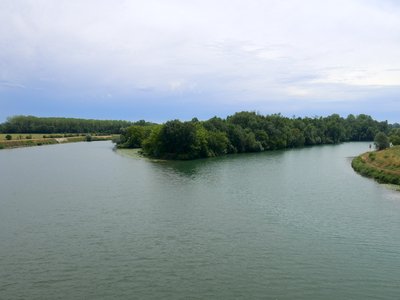
Le confluent du Doubs et de la Saône - Amis saint Colomban PanoramicThe confluence of the Doubs and Saône rivers
Verdun-sur-le-Doubs has been a river crossroads since antiquity, the waterways were the main axes of communication with the Roman roads. As early as the Gallo-Roman period, barges could transport loads of several tons under the shelter of brigands.
The water supply from the Doubs is equivalent to that of the Saône at this location.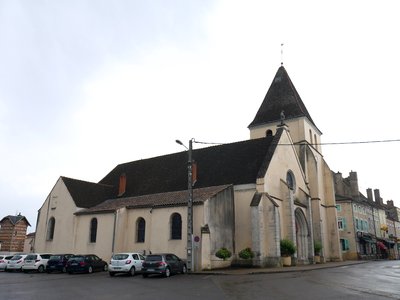
Église Saint-Jean-Baptiste de Verdun-sur-le-Doubs - Amis saint Colomban TouristSaint-Jean-Baptiste Church in Verdun-sur-le-Doubs
Rebuilt in the 16th century, it was partially demolished in 1592 by Héliodore de Thiard to allow the defence of the city, besieged by League troops. The new building was consacré́ in 1612 by the uncle of Héliodore, Cyrus de Thiard, bishop of Chalon, nephew of the famous Pontus.
Description
Leaving the church of Saint-Jean-de-Losne, cross the Saône, on the right, quai de la Hutte.
- After 9,000 metres cross the Saône at the Pagny-le-Château bridge, turn left to follow the right bank of the canal,
- At the Seurre lock, cross the canal, follow the road to the Seurre marina, quai du nord, quai du midi, follow the canal for 800 metres.
- Chazelle on the left, field path before the last house of the hamlet.
- At the crossroads, turn left towards Charnay-lès-Chalon, left, rue de la Chapelle, right, rue bourgeoise, right after the church, small street, chemin de l'ancienne écluse (old lock)
- After the Saône bypass canal, stone path on the left, at the crossroads on the left, on the right and then on the left follow the left bank of the Saône.
- Les Bordes follow the bank of the Saône, on the left to take the bridge over the Doubs, on the right place du Marché, rue du Bac, on the left you arrive at the church of Verdun-sur-le-Doubs
- Arrival : Saint-Martin Church, 1 rue de la République, 71 350 Verdun-sur-Le-Doubs
- Towns crossed : Bourgogne-Franche-Comté
Altimetric profile
Report a problem or an error
If you have found an error on this page or if you have noticed any problems during your hike, please report them to us here:









